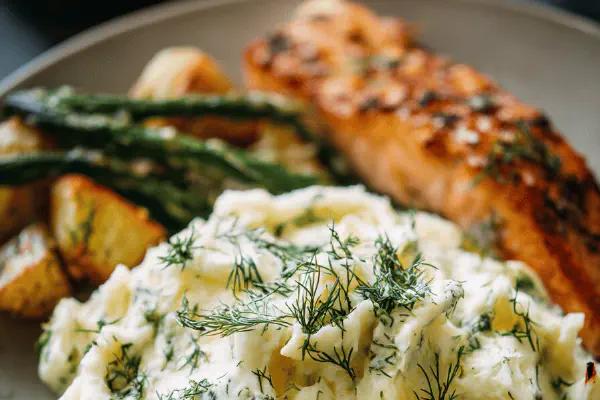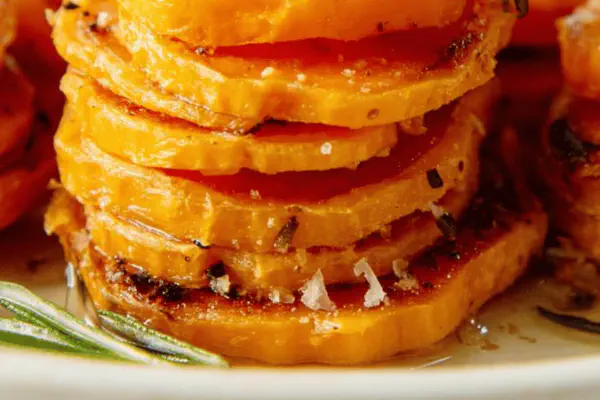Featured Recipe
Rustic Garlic Potato Purée

By Kate
"
Starchy Yukon Gold replaced partially by sweet potatoes. Garlic swapped for roasted shallots and fresh thyme added. Butter swapped partly for olive oil. Cook potatoes in salted water until fork slides in easily but not mushy. Mash with a sturdy tool, add warm milk gradually to avoid gluey texture. Finish with olive oil drizzle or fresh herbs. Simple technique, flexible flavors, and careful timing bring the best texture and aroma. Ideal for adapting to what’s on hand and adjusting richness or herbal notes on the fly.
"
Prep:
20 min
Cook:
35 min
Total:
55 min
Serves:
4 servings
potatoes
sides
comfort food
French cuisine
Introduction
Peeling potatoes, the clink of knife against cutting board. That earthy smell rising. Forget pure starch bombs, introduce some sweet potato sweetness here—balances starch, texture. Roasted shallots replace raw garlic—transform that sharp edge into mellow caramelized notes. Fresh thyme tucked in, subtle but lifts the whole dish. Water comes up to a clean simmer—not rooster crowing boil, bubbles hiding beneath skin, gentle. Don’t rush the tender stage. Fork glides in almost without resistance, barely holding shape. Steaming dry prevents watery mess; that’s the trap many fall into, mushy glue from excess moisture. Mash with respect—don’t terrorize potatoes, coax them gently. Butter melds in warm, then warm milk trickles for creamy control. Finish with olive oil drizzle to keep it bright, fresh, not overly rich. Skip ’em if allergic or out—can swap olive oil with nut oil or more butter. Serve warm, best right now. That smell, that texture, worth every second.
Ingredients
About the ingredients
Yukon Golds provide creamy body and moderate starchiness; sweet potatoes add moisture and subtle sweetness—balances dry fluffiness. Roasted shallots instead of garlic mellow the pungent bite while adding caramel undertones. Butter is classic but partly replaced by olive oil for lighter richness and subtle fruity aroma. Milk warm before adding to avoid cooling and clumping mash. Fresh thyme works well fresh or dried, releasing essential oils during cooking; if unavailable, rosemary or sage create another earthy profile. Salt anytime: starting with water, then at mashing phase; critical to building layers of seasoning. Don’t skip draining or steaming dry phase; watery potatoes = sucky texture. Mash tool: a wooden pestle or sturdy masher preferred. Electric mixers = risks overworking starch, gluey pastes.
Method
Technique Tips
Potatoes and sweet potatoes soaked only briefly in cold water, never rushed into boiling; gradual heat prevents starch breakdown that can turn gluey. Roasted shallots bring subtle umami and sweetness—prep ahead or buy pre-roasted to save time. Remove thyme sprigs before mashing; leaves reserved for finishing touch. Drain, then leave in pot off heat to evaporate excess moisture—30 seconds to a minute enough. Mash gently; avoid metal beaters or electric unless very careful. Add butter while mash hot—the fat melts smoothly, coats starch granules, prevents clumping. Warm milk added carefully controls viscosity—too fast and mash becomes gluey; too little and it’s dry. Season twice: water stage and final. Taste crucial—salt levels vary potato to potato. Olive oil added at the end adds brightness and silky mouthfeel, can sub olive oil with browned butter cubes or drizzle lukewarm melted ghee. Serve immediately; if holding, rewarm gently in low heat water bath with splash milk or oil to restore creamy body.
Chef's Notes
- 💡 Don't rush soaking potatoes in cold water; gradual heat prevents gluey texture later. Yukon Gold for creaminess, sweet potato adds moisture. Taste at each stage.
- 💡 Roasting shallots ahead saves time when cooking. Use pre-roasted shallots for convenience. They mellow sharpness. Adds caramel depth. Adjust timing based on oven.
- 💡 Warm milk essential. Cold milk shocks mash—leads to clumping. Use increments while folding in. Look for creamy, no lumps. Too much milk? Potatoes can get soupy.
- 💡 Watch for signs of doneness. Fork should glide in but potato still holds shape. Droopy skin indicates readiness. Don't let them overcook or absorb too much water.
- 💡 Taste seasoning at two stages. Start in water, then adjust at mashing phase. Potatoes vary in starch. Salt helps layers—timing matters. More or less? Depends.
Kitchen Wisdom
How to store leftovers?
Keep in airtight container. Refrigerate for up to three days. Reheat gently—splashes of milk help revive texture. Low heat helps.
Can I use different potatoes?
Yes, but results vary. Red potatoes are waxy—less fluffy. Russets? Too dry. Yukon Gold blends creamy and fluffy. Sweet is bonus.
What to do if it gets gluey?
First, avoid overworking. But if gluey happens, add more warm milk, whisk gently. Fold to reduce clumps. Save mash, use patience.
Olive oil substitute ideas?
Use nut oils, or more butter as alternatives. More robust flavor could work. Skip for allergies. Choose lighter options for fresh touch.



